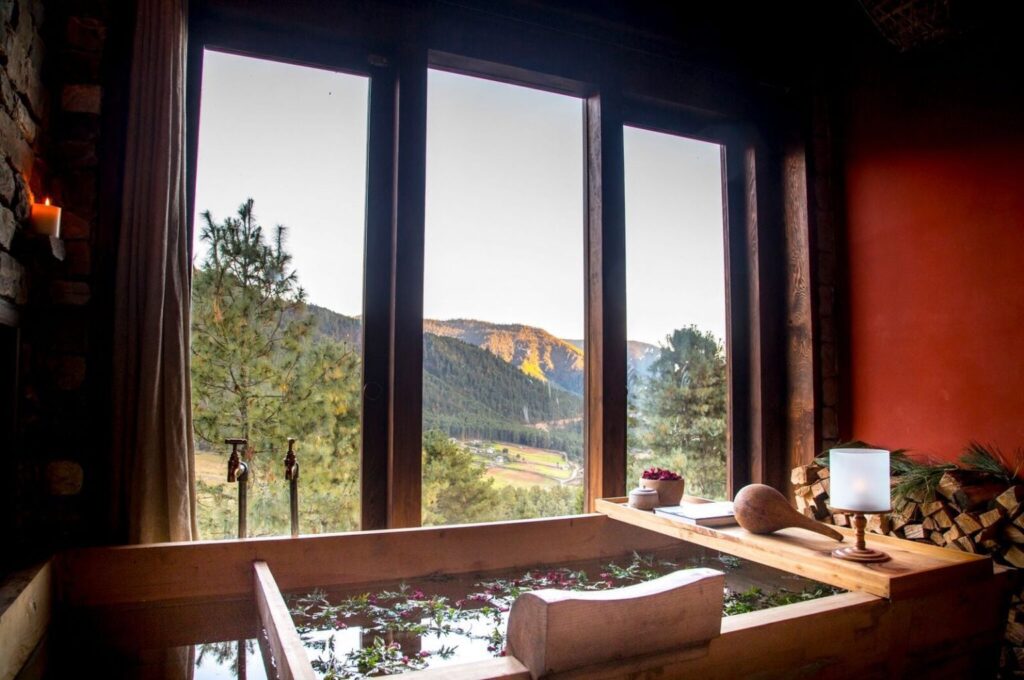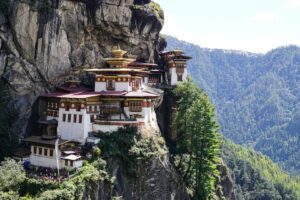
More than the stunning landscape and the famous Dzongs, Bhutan has more to offer to its guests. Bhutan traditional hot stone bath is one experience that one would not want to miss. It is the best way to relax your body and mind after a long day of travelling.
The Bhutan hot stone bath is a ritual itself. The heat from the water, the minerals released from the stones and the local herbs are believed to have a healing power to joint pains, hypertension, stomach disorders and arthritis. In the olden days, after a hard day of farm work, families would soak in the hot bath to relax their tight muscles and regain energy for the next day on the field. In the winter, soaking in the Menchu (medicinal water) is a popular tradition of the Bhutanese.
Traditionally, a hot stone bath in Bhutan is built on the riverbank, outside of the house, for the supply of water and of the rocks. The round large stones taken from the river are first heat for hours in the fire. When they reach the right temperature and start glowing red, these stones are put into a tub, which is filled with water and Artemisia leaves. Minerals from stones are released into the water at the same time as it is heating up. For safety, a wooden bar is used to sperate the hot stones. Artemisia leaves combine with the minerals have a meditative effect on our body, and most of the time people use the local herbs. Interestingly, there are many types of Artemisia and hundred kinds of herbs in Bhutan that have medicinal effect, thus explaining the country’s ancient name Menjung – The Land of Medicinal Herbs.
It is a challenge to find a traditional Bhutan hot stone bath for tourists, but some resorts and hotels are able to provide similar bath with a certain level of authenticity, or maybe even a more luxurious version if one is interested. However, you will need to make an appointment in advance, so the hotel staff can prepare the hot rocks as well as the herbs for your best experience of the hot bath. Men can wear short, and for women, a bikini or sport bra with a short will be suitable. In consideration of guest’s privacy, the wooden tub is likely to be cover with a tent or has a sliding bamboo door. Depending on one’s preference, water and hot rock can be added gradually. You can treat yourself with a pot of tea or a glass of locally brewed wine to compete the whole experience of the Bhutanese traditional hot stone bath. Occasionally, these hot stone baths can be found in farm house or home stay for visitors to enjoy. The ritual of stone bath is one appreciated by the locals, so this is the best way to relax and immerge in the culture of Bhutan. You can also get to know the locals or your host more by participating in this interesting method of relaxation and healing.
While you may want to try the stone bath, soaking in a Bhutanese natural hot spring (Tsachu) is also a great experience to have in the country. These are easier to find as the locations of the hot springs scattered across Bhutan with many medicinal effects. A few hot springs that are popular to Bhutanese and visitors are: Gasa Tsachu and Dur Tsachu.
Gasa Hot Spring
The hot spring is located on the bank of Mochu River in Gasa valley. It is one of the most popular springs in Bhutan, with both tourists and the locals.
There are three bath houses at the Gasa Tshachu. One of the bath houses contains a large bathing pool and the remaining two each have two smaller pools. There is another outdoor pool close to the facilities which is sometimes used by both domestic and wild animals like the Takins.
Dur Hot Spring
Dur Tsachu is in a drivable distance from Bumthang Dzongkha to the village of Dur in the Wangchuck Centennial Park. This region is known as having the most beautiful natural springs in the Himalayas
The Dur Hot Springs Trek leads you through forests of cyprus, juniper, spruce, hemlock and maple. It also offers the chance to view animals such as snow leopard, takin, musk deer, blue sheep, Tibetan wolf and Himalayan black bear.



